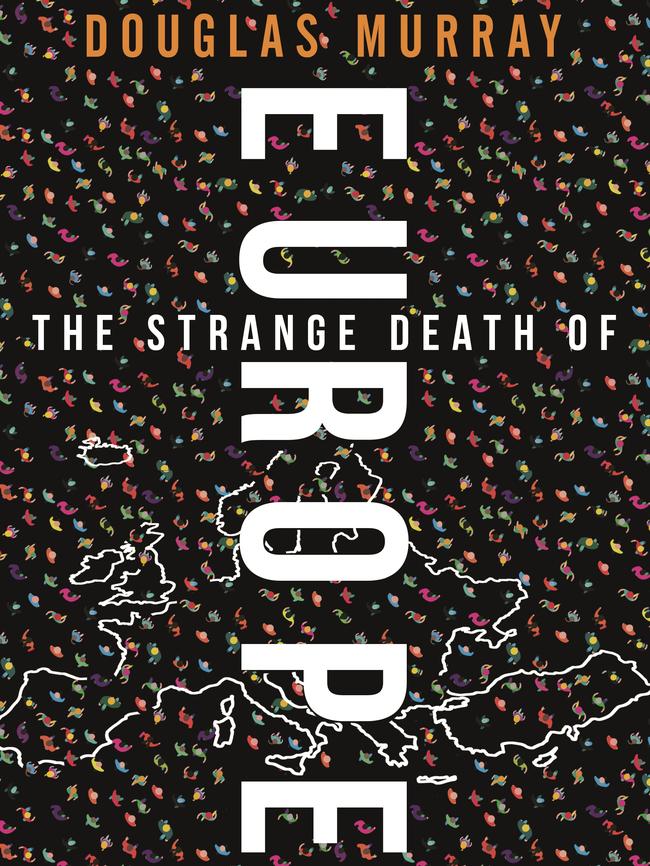I have been reading a fascinating book by Douglas Murray entitled The Strange Death of Europe. It outlines the series of events that led to almost uncontrolled mass migration to many European countries after World War II and since.
Murray makes the point that what often started as limited efforts by certain countries to fill some labour shortages after the war soon transformed into waves of very substantial numbers moving to Germany, France and Britain, in particular.

To be sure, there were often some specific reasons, such as the unwise decision by French president Charles de Gaulle to deem all Algerians to be French citizens. And in the case of Britain, dropping the requirement to have a job caused a surge in migrants.
Ironically, foreshadowing an end to the easy entry of migrants in Britain led to a large increase in migrants as they entered the country before the change. Mind you, data collection is so poor in that country that there is considerable uncertainty about actual net migrant arrivals, something that still remains the case.
Murray describes a process of ex-post rationalisation for the unplanned flow of migrants on the part of various governments. Far from the cultural differences of new migrants being viewed as a problem, the virtues of diversity and multiculturalism were widely proclaimed. Guilt for poor colonial behaviour was thrown into the mix, with the flow of migrants from these ex-colonies interpreted as a form of reparation.
The author is on the money when it comes to querying the economic rationales for immigration — that is, it will be a boost for the economy, productivity and living standards, and it will halt the ageing of the population.
He makes the important point — one that I have made — that unless analyses are undertaken using per capita measurements, they are useless and misleading.
Of course, having more people, say through migration, makes the economy bigger but that doesn’t mean that living standards, as measured by gross domestic product per head, for example, are enhanced by bigger migrant intakes.
And what the best quality studies show is that the economic benefits of immigration are zero or slightly positive, with most of the gains being captured by the migrants themselves.
Employers and incumbent workers with complementary skills gain, but incumbent workers who have similar profiles to new migrants miss out in terms of employment prospects and wages.
Then there is the myth about immigration being useful in the context of an ageing society. The Productivity Commission has made the point at least three times that the impact of immigration on the demographic profile of Australia is minimal. After all, migrants themselves age.
What does surprise in the context of the immigration debate in Australia is the now active role being played by the Reserve Bank. After all, the Reserve Bank really does only one thing and that is to set the cash rate on a monthly basis, although it has January off (how last century). One wonders what the more than 1300 bank staff members do all day.
The governor and now an assistant governor of the bank have become active players in promoting high rates of immigration.
While accepting that high population growth — note that immigration accounts for more than half of our population growth — is contributing to high house prices, newly appointed governor Philip Lowe recently expressed the view that “our immigration program I see as a source of national strength. To give that advantage up just so that we can take some pressure off housing prices, I find kind of problematic.”
This really is an extraordinary thing to say. With his high salary, he will be able to help his children into the housing market. But to dismiss the pressure of high and rising house prices on large numbers of people is surely an inappropriate remark by a senior official. To be clear: “ ... a source of national strength” is a non-specific, non-analytical and lazy rationale for our immigration program.
But not to be outdone, we now have assistant governor Luci Ellis also proclaiming the virtues of our mass migration program.
On the latest figures, the net overseas migration was 182,000 for 2015-16 (the next figure does not come out until next March) and the permanent migrant program numbers are set at 190,000 for this financial year and the next three after that. More than 70 per cent of new migrants head to Melbourne or Sydney.
Ellis correctly remarks that Australia has one of the fastest growing populations in the developed world and this is mainly because of the large contribution of immigration.
She also correctly concedes that “just adding more people and growing the economy to keep pace wouldn’t boost our living standards”.
But she then asserts that because migrants are younger than the incumbent population and they are more skilled — in terms of post-school qualifications, at least — this should boost the economy.
If she had actually bothered to look into the research on immigration, she would have found that the post-school qualifications of immigrants to Australia are much less likely to be translated into well-paid jobs compared with Australian-born graduates.
Using 2013 data, Bob Birrell and Ernest Healy of Monash University found that “nearly 70 per cent of Australian graduates aged between 25 and 34 held managerial or professional jobs, whereas only 31 per cent of non-English speaking background immigrants with a degree held such jobs”. A total of 80 per cent of these immigrants came from non-English-speaking backgrounds.
Then there is the current favourite of the high immigration set, including Ellis: we need huge, congested cities to give our economy dynamism, promote innovation and boost productivity. We have seen ridiculously high population growth rates in Melbourne and Sydney, but sadly for Ellis the data on productivity does not support the thesis.
Multifactor productivity growth has gone nowhere and the capital deepening that has occurred (and that has driven labour productivity slightly higher) is overwhelmingly the result of investment in mining — not in the cities.
We have known for a long time that Treasury is part of the big immigration fan club, in part because economic measures are reported in absolute rather than per capita terms. We all know about the more than a quarter of a century of uninterrupted growth — the trouble is that’s not the case in per capita terms. We can now add the Reserve Bank to the fan club’s membership base.
It’s more important than ever that we have a frank discussion about the costs and benefits of immigration, as well as the specific features of our immigration program, as we hurtle towards a population of 40 million by 2060, if not before.



